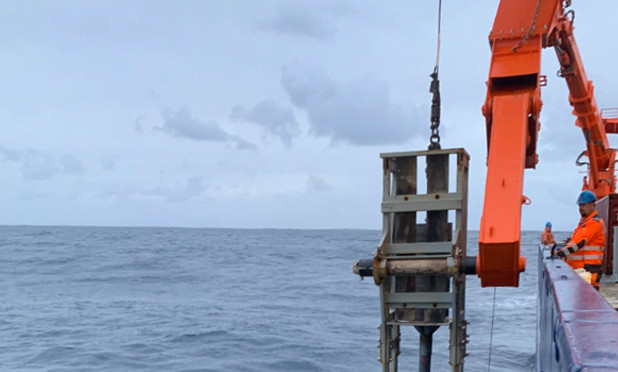Hydrothermal vents and submarine volcanos can support abundant life, as shown in many nature documentaries. The same compounds from the Earth’s Mantle and Earth’s Crust that support the large tube worm colonies at vents are also slowly trickling through large areas of deep sea sediments thanks to diffuse hydrothermal fluid flow. How this diffuse hydrothermal fluid impacts the ocean, or life at the seafloor, is a big unknown because it’s hard to track. It’s not hot like rapid-flowing, and hot fluids at submarine vents – in fact there is very little temperature difference to bottom seawater at all. Nonetheless, it is speculated that these diffuse hydrothermal fluids contain energy sources, like hydrogen and methane, that support organisms far away from the much less prominent, yet easier-to-spot hydrothermal vents.
Scientists have just returned from a cruise to try to understand if and how diffuse hydrothermal fluid flow can support microorganisms and animals in deep-sea sediments. In a month-long expedition to the Azores Archipelago, Dr. Mark Lever, Associate professor at the University of Texas Marine Science Institute, and colleagues sampled a hydrothermally active region. Despite rough weather that included 20+ -foot swells over periods of weeks, Lever and colleagues deployed coring and observational equipment that allowed them to measure chemicals emitting from the ocean floor, and study how micro- and microorganisms rely upon the energy supplied by these chemicals. “It’s like an ecological desert with slow energy trickling up from below,” said Lever. While the research is still being completed, the initial results are compelling and imply that hydrothermal fluids of deep crustal or mantle origin may support the proliferation of life over vast areas that have very little energy coming from the ocean surface.
Lever is joined by geochemists and geophysicists from Germany (GEOMAR, Universities of Hamburg and Bremen), macroecologists from Portugal (Universities of Evra and Aveiro), and microbiologists at Shanghai Jiao Tong University (China). The work is supported by Helmholtz Association of German Research Centres and The University of Texas at Austin.









